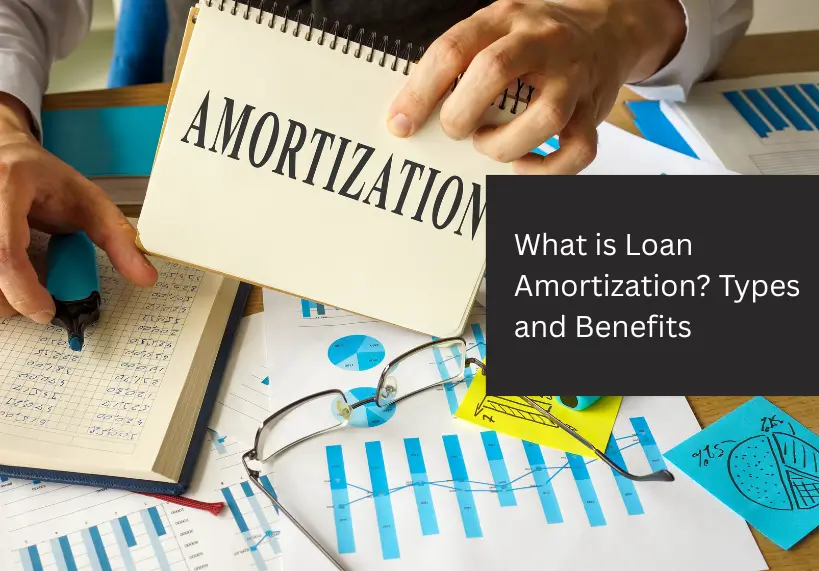
Loan amortization is simply the process of repaying a loan in regular installments over time. Instead of paying back a huge lump sum, you make equal payments (usually monthly) that include both interest and principal. Think of it as chopping a large debt into smaller, manageable pieces.
Each EMI (Equated Monthly Installment) covers some interest for the period and some part of the original loan. Over time, the interest portion shrinks and more of your EMI goes towards reducing the principal.
An amortization schedule is like a roadmap showing this repayment plan: it lists each month’s payment, how much goes to interest versus principal, and the remaining balance. This clear schedule helps borrowers see how their debt will be paid off and when.
For example, if you take a personal loan of ₹12,00,000 at 12% interest for 60 months, the monthly EMI is about ₹26,693. In the first month, roughly ₹12,000 of this goes to interest and ~₹14,693 to principal. By the last payment, nearly the entire EMI goes to principal because the outstanding balance is almost zero. This gradual shift from interest to principal is the essence of amortization.
How Loan Amortization Works
When you borrow (say a home or car loan), the bank sets up a fixed repayment plan. You pay the same EMI every month (assuming a fixed interest rate) over the loan term. Each payment is split: first it covers the interest on your remaining balance, and the rest reduces the principal.
Initially the balance is high, so interest (on that high balance) is higher and the principal portion is smaller. As you pay down the loan, the interest on the outstanding balance falls. So later in the term, more of your EMI goes toward the principal.
Key points about amortization:
- You make equal payments (EMIs) over the loan term, covering both interest and principal.
- Early EMIs are interest-heavy (since the balance is large) and later EMIs are principal-heavy.
- The loan is fully paid off by the end of the term when the schedule balance reaches zero.
For example, one amortization schedule showed a ₹12 lakh loan at 12% split into 60 payments: the balance dropped from ₹12,00,000 to ₹11,25,421 in just five EMIs, with the interest portion shrinking each time.
This systematic process gives a borrower visibility into the debt payoff, much like a budget plan for a big purchase.
Types of Amortization
Not all loans amortize in the exact same way. Here are some common amortization types and repayment structures, explained simply:
- Fixed-Rate (Equal) Amortization: The interest rate stays constant for the loan duration. Your EMI stays the same every month, and you pay a fixed amount of principal plus interest each time. This is the most straightforward type like slicing a cake into equal pieces each month. It’s predictable and easy to budget for. Most traditional term loans (home loans, car loans, etc.) use fixed-rate amortization if the rate is locked.
- Floating-Rate (Variable) Amortization: Here the interest rate can change (often linked to market or bank rates). When rates go up or down, your monthly payment may change accordingly. In a floating-rate loan, the lender recalculates the amortization schedule whenever the rate resets, so your EMI can vary. This can make planning trickier, but borrowers sometimes benefit if market rates drop.
- Interest-Only or Bullet Payments: Sometimes loans allow you to pay only interest (or a small amount) each period, with the entire principal due later. These are called bullet loans or interest-only loans. For example, you might make very low “interest-only” payments for the first few years, and then pay off the whole principal at once at the end. This means early payments are low, but you must plan for one big final payment.
- Step-Up Repayment: In a step-up plan, EMIs start smaller and grow over time. It’s like a salary that rises year by year. For example, you might pay a low EMI in year 1, then a higher EMI in year 2, and so on. This is good if you expect your income to increase – you get breathing room initially.
- Step-Down Repayment: Conversely, a step-down plan starts with higher EMIs that gradually decrease. Imagine a joint home loan taken by a parent and working child: the child pays larger EMIs now, but those payments shrink as time goes on. This suits someone who earns a lot now but expects lower income later (e.g. nearing retirement).
In summary, loan amortization can be tailored: fixed or adjustable interest, equal or varying payments, with or without interim bullet payments. The core idea is the same – spreading repayment over time – but lenders may offer options (like step-up/down) to match borrowers’ cash flow needs.
Benefits of Amortization
Using an amortized structure has several advantages for borrowers (whether for personal or business loans):
- Financial Clarity: An amortization schedule is a clear repayment roadmap. It shows exactly how much of each EMI goes toward interest and how much reduces the principal balance. By following this schedule, borrowers know when and how the loan will be paid off. This transparency lets you plan your budget and cash flow.
- Predictable Payments: With a fixed-rate amortized loan, your EMI is consistent. This consistency means you always know what to expect each month. As one expert note puts it, amortization “ensures you pay the same amount each month”, making it like a fixed bill that is easy to budget around. Even with a floating rate, the amortization schedule outlines how adjustments will work. Overall, amortized loans give you payment predictability, which reduces financial stress.
- Interest Savings: When you amortize a loan, the principal drops steadily. Since interest is calculated on the remaining balance, this means your interest portion shrinks each month. Over the entire loan, you save money compared to a structure that doesn’t reduce principal. In fact, experts point out that amortization “saves you money on interest throughout your loan” because you owe less over time.
- Budget Management: Breaking a huge loan into equal installments is like converting one giant expense into a series of smaller ones. It’s much easier on your pocket than a single large payment. Amortization spreads the burden, so you won’t face a big bill at once.
- Equity and Growth (for Secured Loans): In the case of home or auto loans, amortization builds your ownership stake. Each payment grows your equity in the asset. Over time you own more of your home or vehicle. For a business loan, as you pay down the principal, you’re effectively reducing debt and strengthening your balance sheet.
In short, amortization brings transparency and discipline. You get a clear plan (amortization schedule), steady EMIs, and you save on total interest. Borrowers gain confidence knowing exactly how the debt will be extinguished.
Amortization for Personal and Business Loans
Amortization applies to both personal and business borrowing. In India, common loans like home loans, car loans, education loans and even many personal loans use amortized repayment schedules.
For example, salaried professionals taking a personal loan can budget easily because their repayment plan shows each EMI (principal + interest) until the loan ends. Likewise, business loans (for working capital or expansion) often amortize over a fixed term.
Amortization is also seen in loans against property, commercial vehicle loans, and other products. And even credit cards follow a sort-of amortization if you choose fixed EMIs to pay off a big purchase on card – essentially converting the credit card due into an amortized loan.
Conclusion
In summary, loan amortization is a borrower-friendly way to manage debt. It breaks a large loan into a series of fixed payments that cover both interest and principal. This creates a clear timeline (the amortization schedule) that shows exactly how and when the loan will be paid off.
The main types include fixed-rate and variable amortization, as well as variations like bullet (interest-only) payments and step-up/step-down EMIs. The benefits are significant: you get predictable EMIs, better budgeting, transparency, and typically lower overall interest costs.
Whether you are a salaried individual planning personal finance or a business owner managing cash flow, amortization helps you make informed decisions. LoanTap provides flexible repayment options to further support this.
They allow you to see your amortization schedule upfront and even customize the plan. By taking advantage of an amortized loan structure, borrowers in India can gain financial clarity and control over their repayments.
FAQs:
1. How is amortization different from an EMI?
Answer: An EMI is the fixed monthly payment you make. Amortization is the underlying schedule that shows how each EMI is split between interest and principal and how the outstanding balance falls over time.
2. If I prepay part of my loan, how does the amortization schedule change?
Answer: Part-payments reduce the outstanding principal, which lowers future interest. Depending on your choice and lender policy, prepayment can either shorten your loan tenure or reduce future EMIs. Check your loan statement or contact support to apply the preferred option.
3. Which types of loans typically use amortization schedules?
Answer: Most term loans use amortization: home loans, car loans, personal loans, business loans and fixed-EMI conversions on credit card balances. Short-term working capital facilities may follow different repayment patterns.
4. Practical ways to save interest using amortization (quick tips)
Answer:
- Make occasional extra principal payments when you have surplus cash.
- Choose a shorter tenure if EMIs are affordable.
- Opt for step-up plans if you expect income growth (reduces strain early).
- These actions reduce total interest and shorten the loan life.
5. Where can I view or download my amortization schedule on LoanTap?
Answer: Log in to My Account on LoanTap or use the EMI calculator on the site to generate an amortization table. For customized schedules, contact LoanTap support — they can show your EMI breakup, prepayment options, and effect of part-payments.








